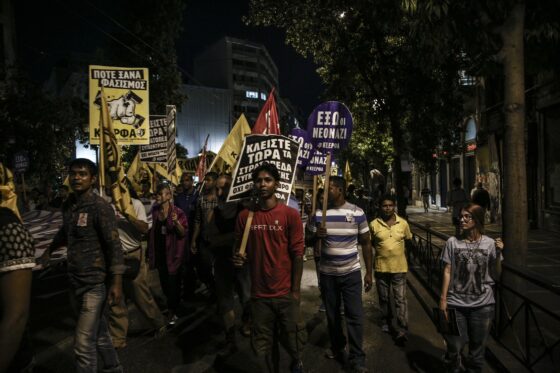How Retailers Can ‘tariff-proof’ Their Business In 2025

Over the past few months, retailers, big-box and indie, have been put through the wringer as they have waited to discover the finalized tariff percentages on imported goods, especially those from China, would be.
The US seems to have finally come to an agreement with China as both parties stated they would lower many tariffs between the two countries for 90 days. Following the recent announcement, the US tariff on Chinese imports will be reduced from its current 145 per cent to 30 per cent, with China lowering its levy on American goods from 125 per cent to just 10 per cent.
With that being said, the roller coaster of emotions American retail executives have been riding over the past few months reflects the importance of maintaining up-to-date supply chain operations.
After 10 years of helping hundreds of brands build global supply chains as the founder of Imprint Genius, Isaac Hetzroni guides retailers on how they can “tariff-proof” their business regardless of what happens after the next 90 days.
How to survive the next retail wave
It’s about building smarter, not harder, by incorporating more flexible sourcing strategies before the market forces your hand.
1. Don’t wait until it’s too late
You don’t need to pull everything out of China overnight, but you do need to start building backup production outside of China today.
The best way to de-risk is by shifting 20-30 per cent of your volume to new regions now. It’s a lot easier to ramp up a secondary supplier when you’re not under pressure. Once tariffs are finalized, there’s going to be a mad rush. Factories will be full, prices will jump and the brands that already have Plan B locked in will have first priority on production slots.
2. Apparel players have an edge
Some product categories are easier to move than others, and apparel leads the pack.
Textiles, garments, bags and accessories are highly mobile because many countries already have the infrastructure. There’s less need for custom molds or heavy machinery and production timelines are faster.
We’re helping many clients move apparel production out of China right now, often within just 60-90 days. For more complex goods like electronics, heavy plastics or furniture, the process usually takes longer and involves a bigger investment. If your product lines include clothing, hats, soft goods or simple sewn items, moving your first projects out of China is one of the smartest plays you can make right now.
3. Where to look: The best sourcing hubs in 2025
If you’re moving apparel, bags or textiles, some of the strongest hubs to consider right now are Bangladesh, Cambodia, Colombia, India, Indonesia, Sri Lanka, Thailand and Vietnam.
Each country brings different strengths:
- Vietnam is strong for apparel, furniture and some home goods, but capacity is getting tight and prices are rising.
- India is becoming a major player in cotton textiles, embroidery and fashion apparel.
- Bangladesh continues to dominate basics like T-shirts and jeans on a massive scale.
- Colombia offers great options for fashion apparel, accessories and bags, with faster access to the US market.
- Cambodia, Indonesia, Sri Lanka and Thailand are all solid options for specific niches within apparel and textiles, with a growing focus on quality manufacturing.
For harder goods like furniture and packaging, Vietnam and India are still leading choices, but options are more limited, and product development can take longer.
Mexico is another option for nearshoring, but it’s important to be realistic.
Right now, Mexico is best suited for specific categories like furniture, packaging and some heavier industries. It’s not yet a turnkey solution for most fashion or textile categories unless you’re producing basics like denim or uniforms.
Across Latin America and Africa, we’re seeing new hubs emerge, too, including places like Egypt and Kenya, offering long-term options for brands that want to diversify beyond Asia.
4. Diversification is no longer just a buzzword
It’s easy to talk about diversifying your supply chain. It’s harder to actually do it.
But in 2025, it’s becoming non-negotiable. Relying 100 per cent on one country, no matter how good the pricing looks, is a gamble retailers can’t afford anymore.
The smartest brands right now are setting up regional splits:
- Keeping some production in China and Vietnam for stability
- Adding India, Bangladesh or Colombia for apparel and soft goods
- Exploring Egypt or Kenya for price-sensitive bulk production
- Using Mexico, when it fits the category, to bring certain goods closer to home
It’s not about abandoning China entirely. It’s about building a supply chain that bends instead of breaks when the market shifts.
5. Speed is the new margin
Tariffs aren’t the only threat. Lead times, shipping delays and global logistics headaches are just as dangerous. Retailers who can move inventory faster and react to demand quicker are going to dominate the next cycle.
Nearshoring in places like Mexico, Colombia or Central America gives brands serious advantages, including faster delivery windows, lower shipping costs, tighter inventory control and less working capital tied up in goods stuck at sea.
Even if tariffs hit, being able to restock quickly can help offset price increases and keep cash flowing. While nobody can predict exactly what’s coming with tariffs, the bigger picture is clear: Diversification, speed and supply-chain flexibility are the must-haves for 2025 and beyond.
Brands that are quietly setting up new production in Colombia, India, Latin America, Vietnam and parts of Africa are giving themselves a major head start.
They’re locking in options and building the agility needed to stay competitive no matter what headlines come next.
In a world where change is the only constant, building a supply chain that’s ready for anything is the smartest move a retailer can make.
The post How retailers can ‘tariff-proof’ their business in 2025 appeared first on Inside Retail Asia.


